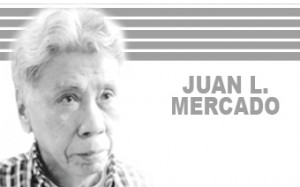 “Et ees a puzzlementâ€, said the late actor Yul Brynner in the Broadway muscial : “The King and I. He  played the role of King Mongkut of Siam, in the early 1860s,
“Et ees a puzzlementâ€, said the late actor Yul Brynner in the Broadway muscial : “The King and I. He  played the role of King Mongkut of Siam, in the early 1860s,
That also sums up “The Puzzle of Economic Growth and Stalled Health Improvement in the Philippines.â€
This paper is linked to two other studies: “Explaining the Large Disparities in Health†as well as Opportunities for Making Health Financing and Services More Inclusiveâ€.
All three were published earlier by the Philippine Institute for Development Studies, a government think tank. The three reports are anchored to the Pilipino proverb: Ang mabuting pangagatawan ay maiging kayamanan.(“Health is wealth.â€)
The economy has grown respectably in the past few years, PIDS said. . The Philippines, in 2013’s last quarter, capped its strongest two years of growth since the 1950s. Gross domestic product rose 7.2 percent in 2013, That was the fastest two-year pace since 1954-1955, data compiled by Bloomberg show.
“A recovery in advanced economies may help President Benigno Aquino achieve his goal of bolstering growth to as much as 8.5 percent by 2016 “The Philippine economy clearly still has strong momentum despite the typhoon,†said Edward Teather, an economist at UBS AG who covers Southeast Asian markets from Singapore. “
“But overall health status indicators have not markedly improved commensurate with that growth. Deaths for under age 5 infants, out of every 1,000 live births was 29 — way behind Malaysia’s 6, notes the latest UN Human Development Report. And immunization converage here, for one year olds, was a robust 88 percent – but still behind Vietnam’s 98.
Equity has also become a global benchmark, especially in health. But the gap between the richest and the poorest Filipino households, in terms of health financing, access to services, and health status, has not markedly improved….“It is important to mull over the puzzle of economic growth and health inequity.â€
The report authors are:. Ulep Valerie, Gilbert.Ortiz, Danica Aisa.,Picazo, Oscar.,Aldeon, Melanie .,dela Cruz and Nina Ashley.
Macroeconomic growth, international competitiveness, and financial stability are necessary conditions for development. “‘But they are not sufficient. The goal of a country`s growth efforts should be human development in a sustainable environment.”
Persistent social inequity within an improving economic environment breeds political instability, exclusion, and disenchantment among the poor. It also spawns crime and other social pathologies.
The lynchpin to any vibrant economy and polity is social participation,. And more active social participation can only be achieved under a regime of more inclusive growth and reduced social inequity.
‘President Aquino, in mid February, “created a club of the 30 poorest provinces that will receive increased funding between now and the end of his term in 2016, Inquirer reports.
The PIDS study pinpoints six key factors that underpin the large disparities in health status. First off is widespread chronic poverty. Then, there is “severe underinvestment in health since the 1970s, despite a ballooning population.
Political instability, due to the insurgency, further reduced access to care. Growth of the economy has not created jobs. A country fractured into 7,120 islands at low tide “impinges adversely on the delivery of health resources.
The frequent disasters and environmental risks, heightened by climate change further contribute to health inequity. Think supertyphoon Yolanda and the Bohol earthquake. All too often, officials`scramble to revsolve “the short-term, immediate, and emergency concerns of governing and management.â€
The third policy note addresses what more can be done. “Many opportunities exist today to make growth more inclusive through improved health financing, regulation and planning, and service deliveryâ€.
Economic growth makes it possible for the health budget to increase. The Department of Health is keen on expanding health services to address the significant deficits in the number of health facilities
The Aquino II administration`s health financing reforms (such as the Universal Health Care program) is deliberately designed to focus on the poorest of the poor. There are also promising health market innovations that can significantly improve supply-side response.
Lastly, performance benchmarking has been accepted as a norm in the health sector, and several initiatives have been undertaken, including accreditation, seal of good housekeeping, DOH`s balanced score cards, and dashboards.
“Et ees not a puzzlementâ€, as the King told everyone within earshot. (By Juan L. Mercado)
